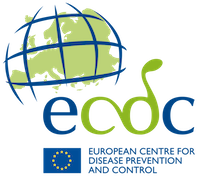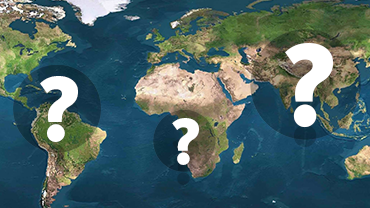Epidemiological update: Outbreaks of Zika virus and complications potentially linked to the Zika virus infection, 6 October 2016
Since 2015, and as of 6 October 2016, there have been 69 countries and territories reporting mosquito-borne transmission of the virus.
Weekly summary
Since 2015, and as of 6 October 2016, there have been 69 countries and territories reporting mosquito-borne transmission of the virus. According to WHO and as of 6 October 2016, 22 countries or territories have reported microcephaly and other central nervous system (CNS) malformations in newborns potentially associated with Zika virus infection.
- In the USA, 26 new locally-acquired cases have been reported in Florida since the last CDTR, bringing the cumulative number of locally-acquired cases to 141.
- According to the media,Thailand has confirmed 392 Zika cases since January, including 36 pregnant women.
- On 3 October, the media reported that the Maldives Health Protection Agency has implemented a surveillance programme in order to determine whether Zika infection is spreading in the Maldives. The programme involves testing patients with fever for Zika virus and preventive measures to control mosquito breeding.
- US CDC has updated its interim guidance for persons with possible Zika virus exposure who are planning to conceive and interim guidance to prevent sexual transmission of Zika virus, both combined into a single document.
Update on number of cases
The USA Twenty-six locally-acquired cases have been recorded in Florida over the past week. To date, 141 locally-acquired and 721 imported cases of Zika have been reported in Florida. The distribution of the locally-acquired cases is as follows: 132 in Miami-Dade, seven in Palm beach, one in Pinellas and one in Broward.
The Philippines On 4 October, the Philippines reported three new autochthonous cases, bringing the total to 15.
EU/EEA imported cases: Since July 2015 (week 26), 19 countries (Austria, Belgium, the Czech Republic, Denmark, Finland, France, Ireland, Italy, Luxembourg, Malta, Netherlands, Norway, Portugal, Romania, Slovakia, Slovenia, Spain, Sweden and the United Kingdom) have reported 1 839 travel-associated Zika virus infections through The European Surveillance System (TESSy). Over the same time period, seven EU countries reported 85 Zika cases among pregnant women.
EU’s Outermost Regions and Territories As of 6 October 2016:
- Martinique: 36 445 suspected cases have been reported, an increase of 90 since the previous week. The weekly number of cases has been decreasing.
- French Guiana: 9 790 suspected cases have been detected, an increase of 20 cases since the previous week. The weekly number of cases decreased. According to the regional situation report, the epidemic is over.
- Guadeloupe: 30 590 suspected cases have been detected, an increase of 90 suspected cases since the previous week. The weekly number of cases has been decreasing.
- St Barthélemy: 770 suspected cases have been detected, an increase of 30 suspected cases since the previous week. The weekly number of cases is stable.
- St Martin: 2 595 suspected cases have been detected, an increase of 60 suspected cases since the previous week. The weekly number of cases is stable.
Since February 2016, 12 countries have reported evidence of person-to-person transmission of Zika virus, probably via a sexual route.
Update on microcephaly and/or central nervous system (CNS) malformations potentially associated with Zika virus infection As of 6 October 2016, microcephaly and other central nervous system (CNS) malformations associated with Zika virus infection or suggestive of congenital infection have been reported by 22 countries or territories. Brazil reports the highest number of cases. Nineteen countries and territories worldwide have reported an increased incidence of Guillain-Barré syndrome (GBS) and/or laboratory confirmation of a Zika virus infection among GBS cases.
ECDC assessment
The spread of the Zika virus in the Americas is likely to continue as the vectors (Aedes aegypti and Aedes albopictus mosquitoes) are widely distributed there. The likelihood of travel-related cases in the EU is increasing. A detailed risk assessment was published on 30 August 2016. As neither treatment nor vaccines are available, prevention is based on personal protection measures. Pregnant women should consider postponing non-essential travel to Zika-affected areas.
Countries and territories with reported confirmed autochthonous cases of Zika virus infection in the past three months, as of 7 October 2016
| Countries affected in past 3 months | Areas (non-tropical countries only) | Type of transmission |
|---|---|---|
| American Samoa | Widespread transmission | |
| Anguilla | | Widespread transmission |
| Argentina | Tucumán Province | Widespread transmission |
| Antigua and Barbuda | | Widespread transmission |
| Barbados | | Widespread transmission |
| Bolivia | Widespread transmission | |
| Bonaire | | Widespread transmission |
| Brazil | Widespread transmission | |
| Cape Verde | Widespread transmission | |
| Colombia | Widespread transmission | |
| Costa Rica | Widespread transmission | |
| Curaçao | Widespread transmission | |
| Dominica | Widespread transmission | |
| Dominican Republic | | Widespread transmission |
| Ecuador | Widespread transmission | |
| El Salvador | Widespread transmission | |
| Fiji | Widespread transmission | |
| French Guiana | Widespread transmission | |
| Guadeloupe | Widespread transmission | |
| Guatemala | Widespread transmission | |
| Haiti | Widespread transmission | |
| Honduras | Widespread transmission | |
| Jamaica | Widespread transmission | |
| Martinique | Widespread transmission | |
| Mexico | Widespread transmission | |
| Micronesia, Federated States of | Widespread transmission | |
| Nicaragua | Widespread transmission | |
| Panama | Widespread transmission | |
| Paraguay | Widespread transmission | |
| Peru | Widespread transmission | |
| Philippines | | Widespread transmission |
| Puerto Rico | Widespread transmission | |
| Saint Lucia | Widespread transmission | |
| Saint Martin | Widespread transmission | |
| Saint Vincent and the Grenadines | Widespread transmission | |
| Saint-Barthélemy | Widespread transmission | |
| Samoa | Widespread transmission | |
| Singapore | | Widespread transmission |
| Sint Maarten | Widespread transmission | |
| Suriname | Widespread transmission | |
| Thailand | Widespread transmission | |
| Trinidad and Tobago | Widespread transmission | |
| US Virgin Islands | Widespread transmission | |
| United States of America | Florida (Miami-Dade county) | Widespread transmission |
| United States of America | Florida (Broward, Palm Beach and Pinellas counties) | Sporadic transmission |
| Venezuela | | Widespread transmission |
| Antigua and Barbuda | Sporadic transmission | |
| Bahamas | | Sporadic transmission |
| British Virgin Island (UK) | | Sporadic transmission |
| Cayman Islands | | Sporadic transmission |
| Cuba | | Sporadic transmission |
| Grenada | Sporadic transmission | |
| Guinea-Bissau | Sporadic transmission | |
| Malaysia | | Sporadic transmission |
| Saba | Sporadic transmission | |
| Saint Kitts and Nevis | Sporadic transmission | |
| Sint Eustatius | | Sporadic transmission |
| Turks and Caicos Islands | Sporadic transmission | |
| Vietnam | | Sporadic transmission |
The classification of countries above is based on: 1) number of reported autochthonous confirmed cases; 2) number of countries who report a zika virus transmission or a country’s transmission status changes; 3) duration of the circulation.
Countries or territories with reported confirmed autochthonous cases of Zika virus infection in the past three months, as of 7 October 2016
All latest ECDC maps with information on countries or territories with reported confirmed autochthonous cases of Zika virus infection





